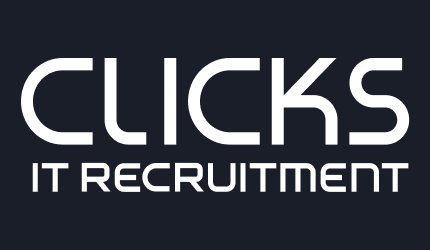Tackling unconscious bias
Workplace diversity is important to organisations and candidates alike. Research has shown financial performance, innovation and improved decision making are just some of the many benefits of a diverse workforce. 70% of job seekers value an organisation’s commitment to diversity when considering prospective employers. Diverse workplaces help create successful businesses that job seekers want to work for. While not the solution, an important step to achieving workplace diversity is tackling unconscious bias.
Unconscious bias – also referred to as implicit bias – is the unconscious attitude and belief associated with certain people or groups of people. The stereotypes we attribute to others impact how we understand and engage with them. What’s interesting is unconscious bias is often at odds with our conscious values. So, how do they form? It’s been reported that unconscious bias can be activated by circumstances such as working under time pressure or multi-tasking. That’s because it’s human nature to try to organise, categorise and simplify information and the world around us. However, when it comes to hiring decisions, this can hurt workplace diversity. So, what can be done?
It starts with you
In order to tackle unconscious bias, it’s important to understand what yours are. Complete the Harvard Implicit Assessment Test to uncover them. There are many ways you can reduce unconscious bias. When it comes to hiring, revisit your results before you start the recruitment process so you are aware of how they may be influencing your decisions. To help take the pressure off having to make quick decisions – when unconscious bias is more likely to creep in – allocate the appropriate time to plan and execute your hiring process.

Empower leaders and others around you
Have your leaders complete the test to discover their unconscious bias, and run an information session to highlight how unconscious bias can affect us in the workplace. Implement policies and practices that promote an inclusive and diverse workplace. For example, ensuring a gender diverse interview panel for all recruitment.

Understand the different types of unconscious bias
Affinity bias is the tendency to gravitate towards people similar to ourselves, with similar interests, experiences and backgrounds. This may include cultural background, gender, age, or educational background. Affinity bias also extends to having an affinity for people who are similar to the people we have a positive regard for.
What can be done? To avoid a team of clones, get to know people better by objectively assessing relevant skills, experience and qualifications against your requirements. Be clear and specific about what culture fit means and how it’s being assessed. Consider the benefit of culture add, and bringing in complementary competencies that encourage divergent thinking. Diverse interview panel members who offer a different perspective to your own will also help.

Attribution bias refers to how we evaluate and assign (or attribute) reasons for the behaviours of others or ourselves. When it comes to recruitment we may over emphasise a candidate’s faults and minimise their achievements.
What can be done? Review your assessment of the candidate. Are the opinions you’ve formed supported by facts, or based on assumptions? Is the candidate who arrived 15 minutes late unprofessional, or were there circumstances beyond their control? The key is to gather more information. This can be done through asking clarifying questions, and a robust selection process design (such as structured interviews, case studies, technical tests, presentations, and personality assessments), and speaking to referees.

Gender bias is a preference of one gender to another. It’s also the assumption thata particular gender is better suited to certain jobs. WGEA reports women are under-presented in leadership positions across almost all industries in Australia. Similarly, women are over-represented in jobs assumed to be more suited to females: nursing, childcare, human resources and administration.
What can be done? Using gender neutral and inclusive language in job ads and position descriptions is a great start. Job ads can also explicitly encourage those who are seeking flexibility or have taken a career break to apply. This encourages female applicants. The selection process should focus on key competencies to perform the role and include an objective rating scale that is agreed to at the start of the process. A gender diverse interview panel is also important.

The Halo effect is the tendency to view everything about a person in a positive light after learning something impressive about them. This can lead to failing to probe and explore a candidate’s fit fully and result in hiring unsuitable candidates.
The Horns effect is the opposite of the halo effect. It occurs when we focus on a feature about a person that we believe is negative or dislike, resulting in an unfavourable judgement overall. For example, you found a candidate’s response to an interview question particularly jarring and that makes you dislike everything else they say. I once had a client reject a candidate because their physical appearance reminded them of their ex. As a result, you miss out on a suitable candidate.
What can be done? Take away the negative or positive feature you are focusing on and see how you feel about the candidate. How do their skills, qualities and experience stack up? It’s also helpful to compare notes with other interview panel members and discuss the reasons for preferring one candidate to the other. This is where structured interviews with pre-assigned weights to the key selection criteria and clear scoring systems is important.

It’s been reported that the average person makes 35,000 choices each day. Unconscious bias is therefore likely to creep into the way we process information and make decisions. But increased awareness and implementing processes and policies to minimise unconscious bias will help create diverse workplaces. If you’d like to find out more about anything to do with increasing the diversity of your workforce, please contact Sam Micich on 03 9963 4802 or via email.
For any hiring needs please reach out to your Clicks Account Manager or 1300 CLICKS for a confidential discussion. We believe our talented and diverse workforce is the reason we’re so successful. We work hard to support our clients in achieving the same success by increasing the diversity of their own workforces.
Clicks has trusted partnerships with Australia’s most effective diversity enterprises. Whether your goals include more female, neurodiverse, LGBTIQ or indigenous workers, we have a partner network to guarantee an appropriate and culturally sensitive recruitment experience.









